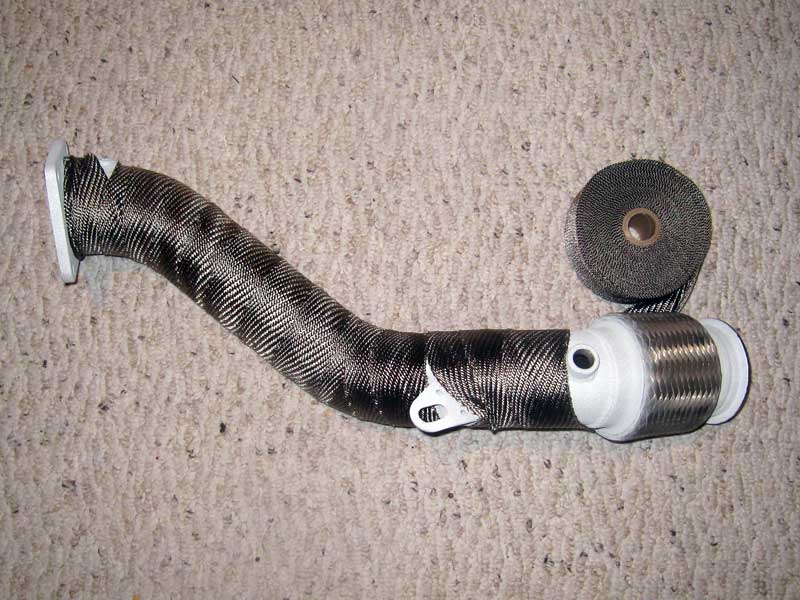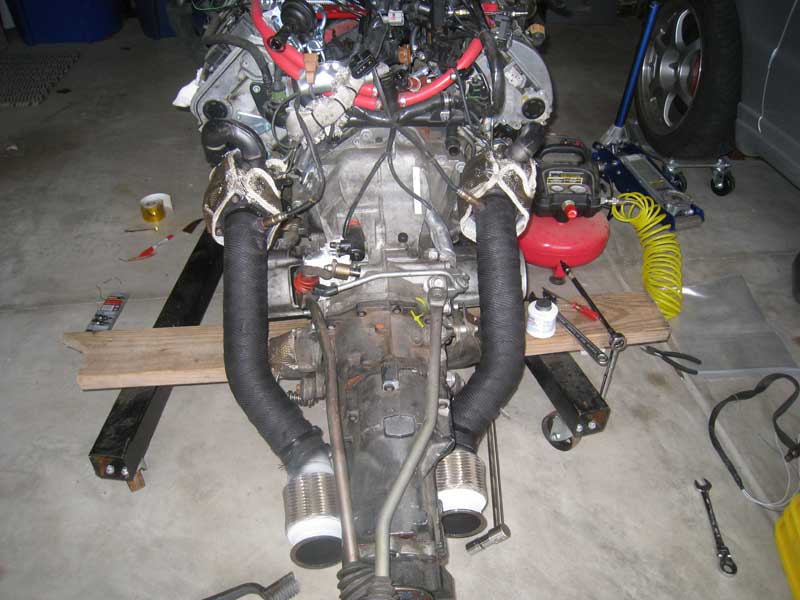Reason:
You’ve probably heard this about thermal wrapping exhaust downpipes – it helps to retain heat in the exhaust gasses, this then will increase the exhaust gas velocity, higher exhaust gas velocity produces better turbo spool.
I decided to test and find out if this theory held up in practice.
The Setup:
I began with an untreated set of Autospeed 3″ downpipes to obtain baseline data on my BW K03 equipped S4. The I sent the downpipes off to Swain Tech to have their White Lightning ceramic exhaust coating applied.

Next I wrapped the downpipes in DEI’s Titanium exhaust wrap.
 Last I spayed some DEI high temperature silicone on the titanium wrap to help prevent the fabric from fraying over time.
Last I spayed some DEI high temperature silicone on the titanium wrap to help prevent the fabric from fraying over time.
 The Test:
The Test:
To evaluate if the turbocharger spool up improved with the downpipe thermal wrapped I logged the car from various starting rpm’s and determined the amount of time it took for the boost to rise from 2 to 11 psi.
Data was collected on the untreated downpipes as well as with the ceramic coating and exhaust wrap.
The Results:
The before and after results of turbocharger spool up with the downpipes untreated and with thermal wrap are charted below, K03 and blanketed K03:
Conclusion:
There does not appear to be any significant decrease in the spool time of the turbochargers with the use of the ceramic coating and exhaust wrap on the downpipes.
I suspect this may be another instance where a sound theory is misapplied. Whether it is the temperatures involved, gas velocities, or distance that the exhaust gasses travel, there is probably something about the conditions on the car that make adding the thermal coatings a wasted effort if improving turbocharger spool time is the goal.


